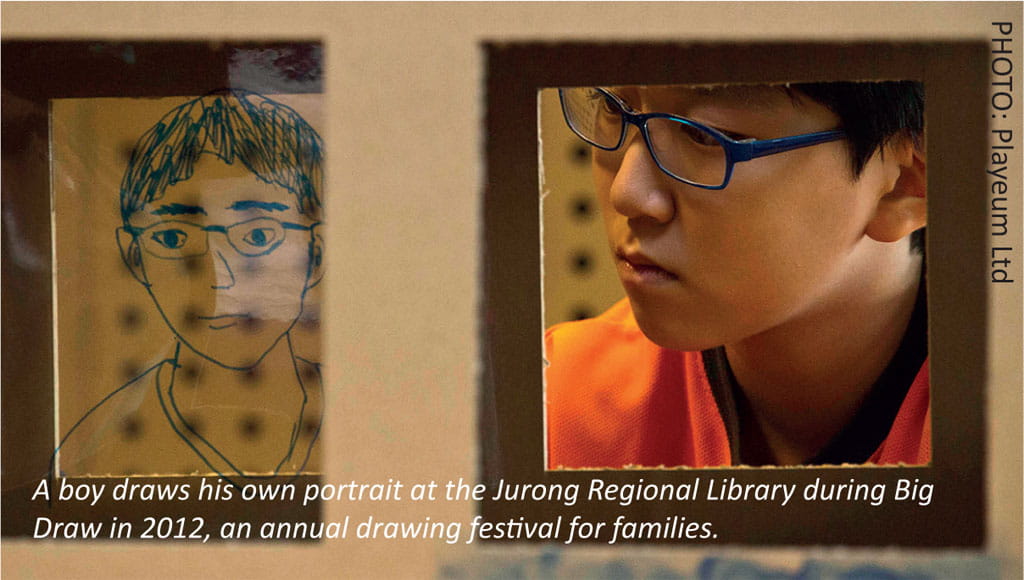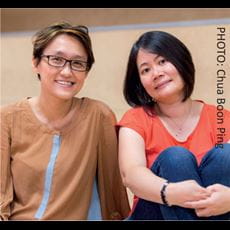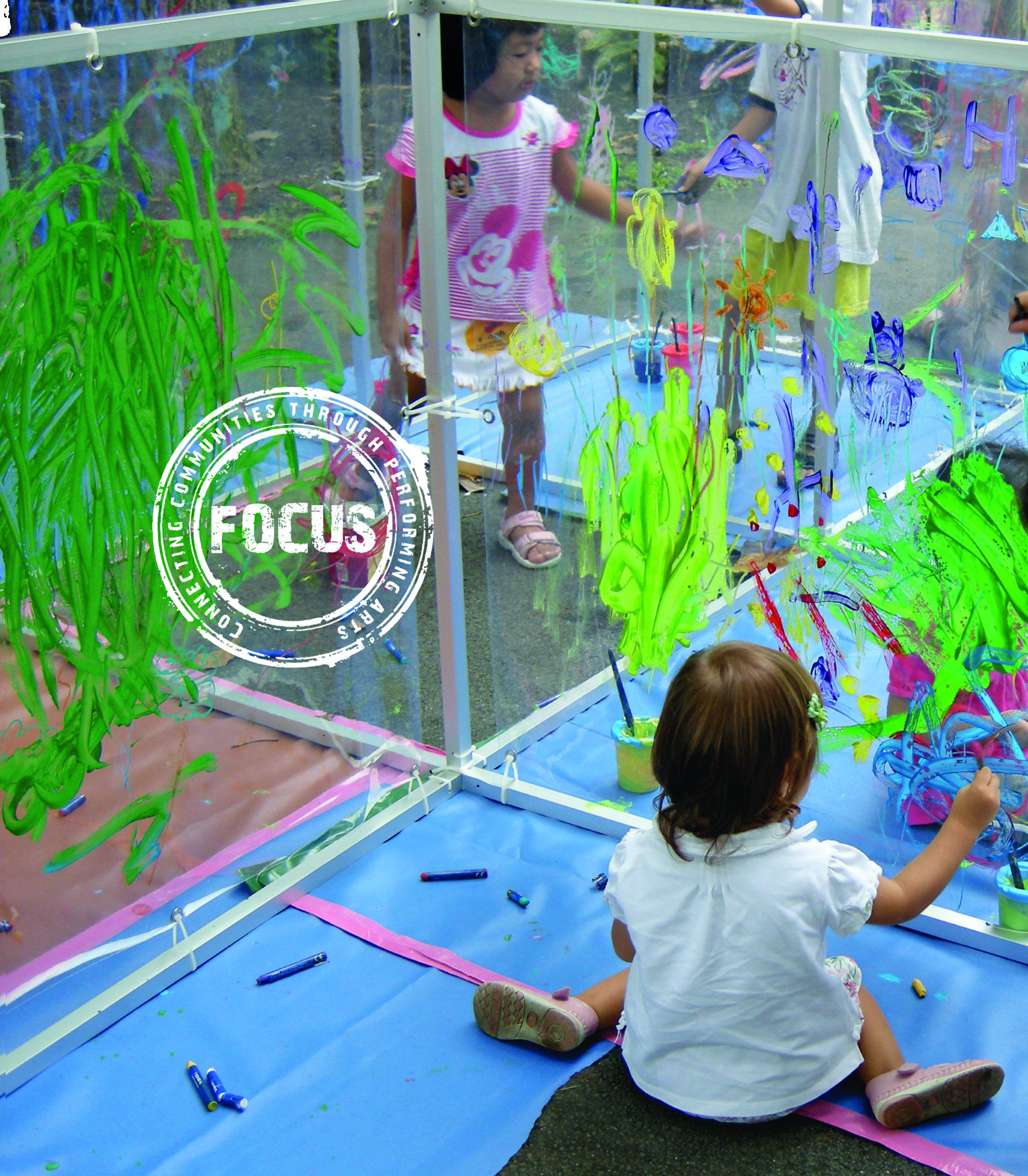
The language of art has taken on a dimension of reality at the grassroots level, addressing social issues that are relevant and real, such as healthcare, active ageing and even death.
By Lai Ee Na
he performing arts can be more than entertainment. It is a powerful tool to reach out to non-traditional audiences such as the underprivileged, the elderly and children, giving them a voice to express or explore feelings about personal issues such as health, relationships and even sensitive topics such as end-of-life arrangements.
Arts groups and social enterprises in Singapore are increasingly tapping into this power to do good.
ArtsWok, an arts-based community development company, recently launched a major project ‘Both Sides Now’ to help people, their families and healthcare practitioners deal with the taboo topic of death.
Co-founder Ko Siew Huey says: “We want communities to discuss social issues that concern them; to tap on their creativity and imagination and find solutions to challenges that they face. This can come about only when they are seen as collaborators and not passive audiences.”
LIFE BEFORE DEATH
In 2013, Ko, together with ArtsWok’s other co-founder Ngiam Su-Lin, partnered theatre company Drama Box to bring end-of-life issues to the public through ‘Both Sides Now’. Staged late last year at Khoo Teck Puat Hospital, the aim was to create awareness, encourage reflection and provoke conversations around end-of-life issues. This is so that more people can make informed choices and plan for a dignified death for themselves or their loved ones.
The project involved installations, short films, dialogue sessions and theatre performances that dealt with the subject of dying. A double-bill film, Ah Ma, Then and Now, which comprised two films, were recently screened. Ah Ma, was created by Camera d’or 2013 winner Anthony Chen, about a family grieving the passing of their grandmother. Then and Now is a short film created by Jasmine Ng, who interviewed the actors and the director of Ah Ma for their personal take on death and dying.
“Doctors, nurses and healthcare administrators find it difficult to have end-of-life conversations with patients and their caregivers. Death and dying are seen as failures of the medical system and is also a taboo topic,” explains Ngiam.
THE ART OF HELPING THE ELDERLY
ArtsWok also worked with dance outfit, The Arts Fission Company, which also does community outreach, to develop a “music and movement” programme for the elderly at Villa Francis Home for the Aged.
It is called Everyday Waltzes for Active Ageing, and Ko explains how it works: “We take everyday objects and experiences and use these to stimulate conversations, memories and new perspectives for the seniors. As they engage in imaginative play with the staff, we see them relating to one another on a more personal level. This rapport creates deeper connections which can enhance the quality of caregiving.”
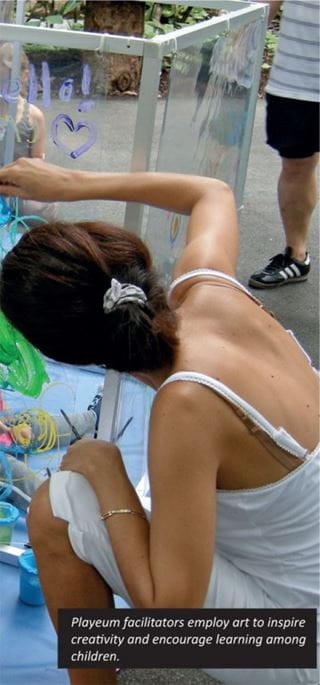
|
ArtsWok co-founders Ko Siew Huey (left) and Ngiam Su-Lin help the elderly cope better with end-of-life issues by using the arts.
|
Commissioned by the Agency for Integrated Care (AIC) and supported by the NAC, this pilot programme was introduced in February 2014. In the 12-week programme, dancer-facilitators took the seniors at Villa Francis through the dance steps, developed training resources such as the music CD and a manual based on the input from earlier sessions and trained care staff at nursing homes to implement the programme. ArtsWok facilitated regular evaluation sessions between Arts Fission, AIC and Villa Francis to tailor the workshops and learning resources to the needs of the seniors and healthcare staff.
Says Ko: “The arts and healthcare are different disciplines. It takes patience from all parties to listen, communicate and understand one another. At the same time, this diversity can be a strength — artistes and healthcare professionals work together to enhance the benefits of the programme.”
Findings from the pilot indicate that residents experienced improvements in memory and confidence in avoiding falls.
Ko recounts a success story about an elderly lady who previously needed assistance to go to the toilet because of her fear of falling down. “Now, she goes on her own because she’s less fearful about that.”
ArtsWok’s Ngiam says on community engagement through the arts: “This kind of work is timely. Engagement is at the forefront now in building a civil society. Singapore is becoming more diverse. The need to bridge and communicate with all sectors of the community is very important...and the arts enables that.”
“We want communities to discuss social issues that concern them to tap on their creativity and imagination, and find solutions to challenges that they face.”
— Ko Siew Huey, Co-founder, ArtsWok
TOO COOL FOR SCHOOL
Playeum, reaches out to children up to 12 years old through creative play, using art as one of its main mediums. The charity aims to inspire creativity and encourage learning through play. For the past four years, it has been working with self-help groups to prepare young children from low-income families, who may not be school-ready, to transit into primary school.
In this programme, Playeum’s facilitators put the children in creative situations such as building a cardboard city or making puppets, storytelling and conversations in a classroom setting. On the last day, parents are invited to view their children’s works in an exhibition. The juniors would become ‘guides’ where they get to explain their work — the intent, their processes, and the stories behind each of their pieces — as they take their parents around.
“This helps the children develop language skills. By the end of the programme, they become more confident when speaking with the adults,” says Jennifer Loh, Playeum’s co-founder.
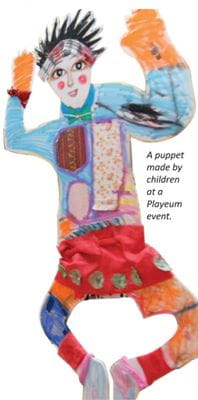
'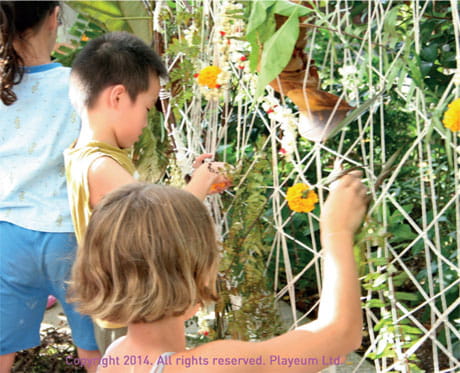
Children enjoying the weaving of a spider web at a Playeum event.

DRAWING FAMILIES TOGETHER
Playeum’s award-winning Big Draw campaign has been bringing families together for drawing activities for the past five years. Says Loh: “We hope to get everyone to draw and use drawing as an additional ’tool’ to process information, communicate and express themselves. We’ve been working with a co-organiser, the South West Community Development Council, to bring together families and communities to draw in novel ways.”
This drawing festival was first started in the UK by a charity, The Campaign for Drawing. It was brought to Singapore by Playeum in 2009 and that edition attracted about 1,500 participants. Visual artist Tay Bee Aye, one of many artists who conceptualised Big Draw’s play experiences, guided the children in “drawing” spider webs among trees at Singapore Botanic Gardens with yarn, whereas sculptor Sun Yu-Li got the children to paint on long canvas panels and batik artist Kamal Dollah created a unique community batik painting.
“At Playeum events, grandparents and parents would engage in the activities together with the children. Many parents also follow our events to get fresh perspectives on how to continue their creative play afterwards,” says Loh, who explains that their play activities open up conversations between children and adults.
“Our dream is to see the arts embraced as a tool for expression and communication, and used by parents to bond with their children,” she explains. “Using the arts as one of our mediums, we hope to see parents and the community view children in a different light; that they can equally contribute to our cultural identity.”
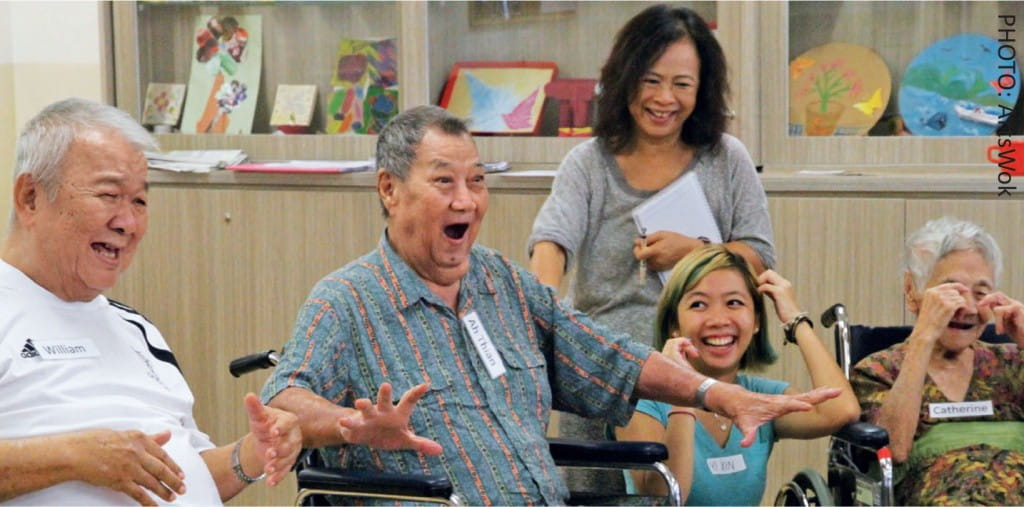
Elderly from the Agency for the Integrated Care take part in imaginative play to help them better relate to one another on a personal level.
Sarah Yap, aged six, for example, attended a group songwriting event with her parents. Each family was asked to write a short poem, which Yap did with the help of her parents, a singer and musician who were also there set a melody to it and created a song.
After that, Yap started writing many poems and stories. Her mother was very happy to see her daughter find a love for the language and started exploring writing more.
ENABLING SPECIAL NEEDS
A public platform for disabled artists will materialise in 2015 in the form of an art gallery in SG Enable Centre in Redhill, a 30,000sqm one-stop service and resources centre for the disabled and their caregivers.
The Autism Resource Centre (ARC) will be the key curator. Visitors can buy the works, giving the disabled an income and helping to build their confidence.
Jacely Lim, Senior Manager of ARC’s Employability and Employment Centre,
says: “Our hope is to enable talented artists with disabilities to have a dignified representation of their creations in a
space dedicated to them.”
“We want communities to discuss social issues that concern them to tap on their creativity and imagination, and find solutions to challenges that they face.”
— Ko Siew Huey, Co-founder, ArtsWok
